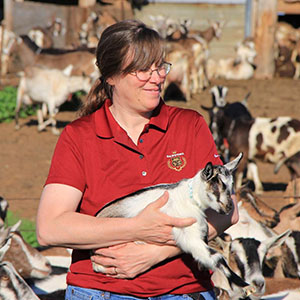Humility is among the core values Chief Executive Jim Sartori lists as central to his family-owned cheese business, Sartori Co. But maintaining that tenet is no simple feat for a business that’s made a name for itself by producing some of the world’s best cheeses.
In March, Sartori Reserve Black Pepper BellaVitano was named the best cheese in the country, outscoring more than 2,000 entries from 33 states. The cheese headed up a laundry list of Wisconsin-made cheeses that earned top honors in the 2017 U.S. Championship Cheese Contest.

And Jim, who began working for his father Joe Sartori in the cheesemaking plant at the age of 15, says he’s having a blast.

The Bella Of The Ball
Awards aside, there is no cheese that better embodies the creative spirit of Sartori than BellaVitano, a crowd favorite first brought to market in 1999. The name takes its origins from an Italian phrase meaning “the good life,” and the cheese itself is loosely based on a recipe from Northern Italy. But that’s where the similarities end.
“For a long time, we called it ‘the indescribable cheese,’” he says. “It has elements of Cheddar, Gruyère and Parmesan. But, overall, the cheese defied characterization. And that was part of our goal. We wanted to create a cheese that was truly unique.”
The creamy, full-flavored cheese is a natural complement to a variety of flavors — including black pepper, balsamic vinegar, espresso, chipotle peppers, fruits, herbs and wine — which are applied to the rind through rubbing or soaking.
Master cheesemaker Mike Matucheski has overseen the production of BellaVitano for more than a decade. He’s also the mad scientist who heads up the team of creative thinkers who experiment with, and test flavorings for, the cheese’s rind.
“There are always things that don’t work, and we learn from them,” notes Matucheski. “For some people, one of the most surprising successes was the espresso BellaVitano. We sampled it at a show in Seattle. And people were like, ‘No, no… how could that taste good?’ But, it was a hit.”
Despite the fact flavor ideas are bountiful, few make it as far as the retail shelves. Most, including the recently-released chipotle BellaVitano, have spent at least a year in development.
“It takes an incredible amount of work to maintain the quality through the process,” he explains. “Through the science, we understand we have to address things like the moisture of the cheese, the PH and the percentage of salt. And various ingredients react with the cheese in different ways.”
Matucheski, who has experimented with a variety of flavorings from more traditional options like beer to more unique rubs like chai tea, says every trial presents new challenges. Recently, he says, he attempted using pomegranate powder as a rub. “It sounds like a great idea,” he notes. “But when applied to the rind, it tends to get really funky.”
It’s for that very reason that Jim notes they’ve always been extremely cautious in their approach to introducing the flavored varieties of BellaVitano.

Jedi Cheesemaker Magic
“The history of adding flavors to cheese is very checkered,” he says. “In fact, flavoring cheeses has been long used as a practice to disguise defects in the cheese itself. And that wasn’t our intention. Our goal was to complement the flavors in the cheese. It’s part of why we began entering the cheese into competitions. It was a way to publicly affirm the fact our cheese speaks for itself.”
“People ask me: ‘What is Montamoré?’ But, it isn’t anything. It’s its own thing,” notes master cheesemaker Pam Hodgson. “And that’s part of our goal in creating Sartori Originals. We enjoy a lot of the cheeses in the marketplace, and they inspire us; but we don’t copy them. We want to innovate and create cheeses that give people a ‘wow’ experience.”
Hodgson says Montamoré was among the first projects she tackled when starting with the company 12 years ago.
“They’d just run the first trial batch for the cheese before I started,” she says. “And it’s been an ongoing process. Our goal is always to create a cheese that’s as good or better than the last. We’re making this product that’s been made for thousands of years, but we’re still trying to create something new.”
As for Montamoré’s flavor, she says, “It’s sweet, but it’s tangy. It’s somewhat fruity, perhaps. There are cooked dairy notes, a touch of savory. But I love that it’s not just one thing.”

But Hodgson says that great milk only paves the way for creativity and innovation. “There are two types of magic in the cheese,” she says. “There’s magic in the cocktail of cultures we use, and the rest is cheesemaker Jedi magic.”
And Hodgson isn’t the only one to see magic in Montamoré. The cheese is a favorite for many, not the least of which is brand ambassador Maria Sartori, who joined the marketing side of the business after earning her Master’s degree from Marquette University in Milwaukee.
“If you ask my dad for his favorite cheese, he always says you can’t pick a favorite child,” she notes. “As for me, I cycle through different cheeses. Some of it’s seasonal, but i think Montamoré is one of my favorites. It’s so versatile, and I love cooking with it. We put it on our fajitas last night.”

Humble Beginnings
These award-winning cheeses were nearly a century in the making. In fact, Sartori’s roots began in Italy near the turn of the 20th century when, at the age of 17, Paolo Sartori boarded the steamship Finlandia with the goal of making a new life in America. During the journey, he kept the company of fellow Italian, Count Bolognese, an acquaintance that would prove to be the key to Sartori’s start as a world class cheesemaker.

For decades, Paolo clung to the notion that America held the key to his success. And 29 years after his arrival, his dream began to take shape. Count Bolognese contacted him to ask if he’d take a job at Stella Cheese in Chicago.
“He remembered my grandfather from meeting him on the ship,” explains Jim. “And he must have thought something of his integrity to look him up so many years later and ask him to work with him in the cheese industry.”
Paolo accepted. And for years, he honed his craft, learning the industry from the ground up. By the late 1930s, he and a colleague, Louis Rossini, decided to try their hand at creating a cheese company of their own. They scouted locations all over the Midwest, finally settling on the former Plymouth Brewing Co., located 140 miles north of Chicago. And in 1939, S&R Cheese Co. was born.

Laying Down Roots
The move to Plymouth was a fortuitous decision. Not only was the brewery well- equipped with the water supply needed for a cheese factory, and located near hundreds of dairy farms, it was smack dab in the midst of a region that was established in the cheesemaking tradition.
Cheese has been produced in Wisconsin for well over 150 years. And since the late 1800s, Plymouth has been at the forefront of cheesemaking activity. During the 1940s, there were at least 65 cheese factories in the area, with nearly a quarter of the population working in cheese-related jobs. In fact, the southern portion of Plymouth — which contained countless facilities where cheese was collected, stored, cured, graded, packed and shipped — became known throughout the state as Cheeseville.
For nearly 40 years, Plymouth was also home to the Wisconsin Cheese Exchange, an entity that assisted in establishing and influencing national cheese prices. As a result, by the 1920s, the city became known as the Cheese Capital of the World, a moniker recently trademarked by city officials. Today, it’s estimated as much as 15 percent of all the cheese consumed in the United States moves through Plymouth during some stage of its processing.
S&R Cheese focused primarily on wholesaling, taking advantage of demand in both bulk grocery and foodservice. And business grew steadily. In 1970, S&R became the first U.S. company to export cheese to both Italy and Japan.

By 1986, Jim took the helm, renaming the company Sartori in 1996. And under his leadership, he expanded the scope of the company to include retail sales, a factor which enabled distribution to all 50 states and dozens of countries around the world. Despite that growth, Sartori has remained true to its roots.
“We’re definitely making more cheese than some companies,” notes Maria, “But the process is no different. There really aren’t any shortcuts in artisan cheesemaking. Our products are all handcrafted. Human beings touch them 10 to 20 times over their journey from being made to being packaged. It’s something that takes time. And it’s a labor of love. Quality has always been a priority for us. And our team has really kept its eyes on that.”
Eyes On The Future
Jim says the company’s success thus far is only “the tip of the iceberg. We have a robust pipeline of new products in the works, and that’s thanks to the extremely creative team of folks here who spend time playing, experimenting and perfecting our cheeses. They’re fully committed to our goal of making the best cheese in the world.”
Jim credits his children, Maria and her brother, Bert, who currently works as a production supervisor, with assisting the company to continue on its path to success. They are, he says, a key to the company’s future. “I represent the third generation,” he says. “And now the fourth generation is in the business, as well. I’d love to see, 50 years down the road, Sartori remaining a family business.”
When asked, Maria deflects credit to her father. “I often find myself reflecting back on the years,” she says. “When I was little, I’d go with Dad into the office or to the plant, and we’d eat cheese curds. It’s been really fun to be a part of this for so many years. The growth, the change and all the dedication that’s gone into it. It’s made me see how hard my dad has worked to really make this company what it is. I’m so proud of him. And it makes me excited for the future.”
A key to that future, notes Jim, is a passion for artisan cheese.
“In the end,” he says, “Our vision is expressed as ‘great cheese on every plate.’ And that’s something we see happening every day among people who appreciate great cheese. There’s so much delicious product in the market, and that’s great. A rising tide raises all ships. For our part, we believe that if we can be a catalyst for artisan cheese, it’s good for everyone. It’s good for dairy farmers. It’s good for employment. If we can continue to share our passion, it makes a difference.”



